Posts Tagged Sonoma County
Xeriscape Landscaping in Sonoma County
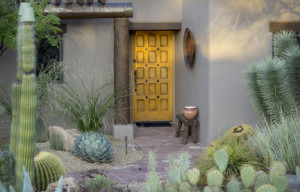 Xeriscape Why?
Xeriscape Why?
Xeriscape became a word invented by Denver Water Department when forbidding watering in summer. Sonoma residents must:
- select plants appropriate to your climate,
- mulch plants to help them retain moisture
- care for your plants properly
- keep plants healthy
- Plant shrubs, trees and other attractive plants where grass used to be.
The foregoing basics reduce water consumption 60 percent. Instead of a monotonous expanse of lawn in shades of green to brown, your yard can become rich with variety and interesting to observers. Filling your yard with a variety of hardy drought tolerant plants indigenous to your area is making a pact with Mother Nature that you are on her side. You are now going to help her with a bounty of beautiful plants she worked over 1,000 years to perfect for your exact piece of land.
Prepare the Yard Soil
- Pick up a fistful of thoroughly wet soil from your yard and squeeze it into a ball. The ball will stay formed or will crumble apart.
- Add organic material to your soil if the ball of dirt crumbled quickly. Compost or manure helps crumbly soil retain moisture.
- Add sand or ground bark to the soil if the ball of dirt formed a tight, hard ball. Hard, clay soil allows all water to run off quickly before it even has a chance to reach a plant’s roots.
Grow Plants Nature Designed for Sonoma
- Grow plants native to the Sonoma parched earth. They adapted mechanisms over hundreds of years to tolerate and cope with your weather and water gauge, so require little watering. Landscape companies can recommend plants for you so that your unique taste can still be displayed in your xeriscape garden.
- Plant trees suited to dry landscaping, such as California buckeye, which though their seeds are poisonous, make great shaped trees. The U.S. Department of Agriculture plant hardiness dictates zones 6a and higher for Sonoma.
- Plant drought-tolerant xeriscape shrubs like California wild lilac, best in USDA zones 5b or higher with lovely flowers. California wild lilac can grow in either full sun or partial shade.
- Choose drought-tolerant ornamental grass like blue lyme for full sun or light shade. This clumping grass is very hardy, with gray-blue foliage and grows up to 4 feet tall with very little water.
- Plant xeriscape succulents in your hard that will store water in fleshy leaves and need little water from you. The Century plant, or Agave Americana, grows well in USDA Zones 9a through 11 in full raging sun or a little shade. Reaching 8 feet in height and 12 feet wide. They provide a focal point if you just make sure you have a safe distance between its spiny leaves and foot traffic.
Follow Xeriscape Principles
- You must cover your entire garden with a layer of mulch or compost so that the need for moisture due to evaporation is nil. Compost has nitrogen, giving plants nutrition and improving texture of your xeriscape yard soil.
- Water in early morning or evening to minimize any evaporation. Drip irrigation systems are the most effective method for Sonoma.
List of Zero to Low Water Need Plants for Sonoma Area
There are many drought tolerant plants needing no supplemental summer water once established. While these are uber-drought tolerant xeriscape plants, some will do a bit better with some water. Some fine shrubs that meet these criteria are:
- Arbutus Onedo
- Acca Sellowiana
- Baccharis Pilularis
- Buxus
- Callistemon spp.
Contact your local landscape company to learn the multitude of xeriscape plants that can beautify your home without watering!
Winter’s For The Birds
While your garden is dormant, it can be just as entertaining and rewarding to feed our feathered friends in winter. Feeding the birds in winter is a kindness not only to them, but also to yourself. After all, there’s nothing quite like watching all of the birds happily feeding each morning while you’re sipping on a hot cup of coffee.
Winter is a particularly a difficult season for birds who stick around colder climates, and is at that time of year when their usual foods are in short supply. Birds use a lot of energy in the winter months to keep themselves warm, they need extra stamina. Winter birds are around, but in order to entice them into our yards, we must provide a little nosh – a little seed, perhaps some suet.
Enrich the Birds’ Diet
Birds need extra fat and protein in the wintertime. Fatty treats like oil sunflower seeds, peanuts, and suet are a tasty way to provide these nutrients. (Change the menu in favor of lighter fare when the spring thaw comes along.)
Hang a Covered Bird Feeder
Use a bird feeder equipped with a roof, to shelter your guests from all but the harshest weather that Mother Nature has in store. Fill it up regularly and remember to remove any seeds that get moldy from wintry damp.
Hang Feeders in Cat-Safe Locations
Place bird feeders in locations that do not also offer hiding places for sneak-attacks by cats and other predators. Think of placing the feeders ten to twelve feet from shrubs or brush piles. This gives the birds some time to react.
Offer Birds both Food and Drink
Birds can become dehydrated in winter even if surrounded by ice and snow. Putting out a pan of water near the feeder on warmer days is a terrific idea.
Save Money and Stock Up on Seed
Bird feeding veterans say it is best to stock up on birdseed in the Fall when many lawn and garden centers are discounting it to make way for winter merchandise. Stored properly, (in cool dry places) seed can easily last for months, particularly seed mixes and sunflower seeds.
Leaving berriesand other fruit on your native trees and bushes. Birds ranging from robins, cardinals, juncos, waxwings and mockingbirds to wild turkey and grouse will feast on these fruits throughout the cold months. And if you’ve been smart enough to leave your fallen leaves on the ground since autumn, the decaying leaf litter will provide a feast of insects, seeds, nuts and other treats for your backyard birds.
Firewood: Harwood vs. Softwoods?

Nothing sets the holiday mood than having a brightly burning fire complete with crackling sounds and fixating flames, to not only warm your home but your soul as well. But not all wood is created equal. Creating a great fire relies on great firewood, and it makes the choice more difficult with so many options available.
When trees are first cut down, they are full of moisture. It’s important to understand that all firewood needs to be properly seasoned, which is to say that it needs to have low moisture content. Well seasoned firewood is easier to start, produces more heat, and burns cleaner.
What’s Better: Hardwoods or Softwoods?
Hardwoods are dense and pack more heat per volume of firewood. This is why they tend to be the best options for burning. The only con to hardwoods is that they are difficult to light. That’s why many people will use softwoods to get the fire going.
Softwoods are less dense and ignite quickly, but they don’t provide long-lasting heat and warmth. They give off soot and creosote which line your chimney, which is a source of chimney fires. Whenever possible, avoid using softwoods in your fireplace. They may be great around a campfire, but they are the last thing you want in your home chimney.
Hardwoods
- Oak: Oak is abundant in the U.S. and considered one of the best picks for firewood. When it’s dried properly, it will burn for hours and produce warm heat. The key is that it needs to be seasoned properly. Oak firewood should be aged in a dry area for at least six months. Oak is difficult to light, but once started, it will offer a long-burning fire.
- Hickory: Hickory can be difficult to split, but once you have this part covered, it burns just as beautifully as oak.
- Ash: Some argue that ash is the best firewood to burn. Ash splits easily and has a low moisture content, which is why people love it.
- Maple: Hard maple produces a slow-burning fire because it’s very dense and heavy. Soft maple is also a suitable choice for firewood. It’s easy to burn with no heavy smoke.
- Birch: Birch is an attractive choice for firewood because it gives off a lot of heat, but the drawback is that it burns quickly. If you find bundles of birch, you’ll probably notice that it’s cheaper than other woods. Just remember that you will burn through more of it, so it’s best to mix in birch with slow-burning firewood like oak.
- Apple: Apple trees aren’t just valued for their apples. They also produce great wood for burning since it has a pleasant smoky aroma and generates little smoke.
Softwoods
- Pine: Pine is readily available, especially because it seasons faster than other wood varieties, and it’s easier to split and light. Pine is a great wood to start a fire with, but it’s not the best to continue with. Pine burns very quickly and has sap pockets that can explode, causing creosote buildup in the chimney.
- Fir: Fir produces sparking just as pine does, but the older trees are easy to split and start. Fir firewood also gives off an ample amount of heat, although not as much as the hardwoods.
Let’s hear from you. What’s your favorite wood to burn?
Raking Leaves – for Aesthetics or Maintenance?
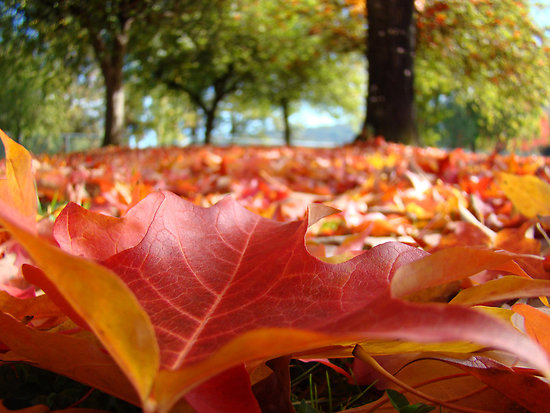 As wonderful as Autumn is, removing the fallen leaves from your lawn in the late fall is not generally regarded as a fun task. It’s time consuming and a bit tedious. You’ll be glad to know the payoff for all your labor goes beyond simply enhancing the curb appeal of your property. Removing fallen leaves is not only vital for the health of your lawn, but the beauty of it as well.
As wonderful as Autumn is, removing the fallen leaves from your lawn in the late fall is not generally regarded as a fun task. It’s time consuming and a bit tedious. You’ll be glad to know the payoff for all your labor goes beyond simply enhancing the curb appeal of your property. Removing fallen leaves is not only vital for the health of your lawn, but the beauty of it as well.
Excessive leaf matter on your lawn going into winter is bad for several reasons. Why you might ask? When your lawn becomes buried in layers of leaves, it becomes smothered and is deprived of water, air and nutrients it needs to survive. Without proper leaf removal your lawn will also become a breeding ground for fungi, disease and insects. Additionally, when leaves shade the grass they prevent it from receiving the sunlight it needs to thrive. While a few scattered leaves on the lawn won’t do much harm, a heavy thick layer will. Leaves left in place over the winter often become compacted and cause extensive damage to your lawn which can lead to increased costs and maintenance in the Spring.
Instead of raking the leaves, wait until they’re good and crunchy (ripe for jumping into), and then mow the leaves into little pieces. Then, you can just leave them! The leaves will serve as mulch and will protect the soil around your trees, shrubs, or garden.
Another option you have is to compost your leaves, but you simply can’t rake up all your leaves into a big pile and expect them to compost themselves. Composting requires regular turning of the leaves as well as the right amount of moisture.
Want to leave the fall clean-up work load for someone else? DK Landscaping Services offers both leaf removal and fall clean-up services. These services help ensure your landscape is clear of debris and fallen leaves are removed, preventing mold and fungus from growing. Give us a call (707) 280-3632.
Lawn Tricks and Treats for Winter Survival

When you think lawn care, spring may be the first thing that comes to mind, but the fact is back-to-school is perhaps an even better time to treat your lawn to some TLC.
October is no trick when it comes to setting up your lawn for better survival over the winter. And the treat, if done correctly, means a greener and healthier lawn next Spring for any lawn treatment done in October. Lawn care treatments are best done before soil temperatures drop to a level where your lawn is going into hibernation. are of particular. And seeding and fertilizations of any kind are more sensitive to warmer soils for maximum results in the fall. Here are some tips to follow for luscious lawn come spring:
Fertilizing
Natural and organic fertilizers also work best in warmer soils when micro-organisms are growing and can help breakdown the material into a useable form for your turf grass. By contrast, synthetic fertilizers are already in a more useable form and can be used later into the season as soils cool down. The cautionary note of using fertilizers too late in the season if theground is frozen or very cold means not really achieving any benefit to the lawn and the possibility of runoff into streams, rivers, and other undesirable areas.
Core Aeration and Lime
Over time your soil naturally becomes compacted and builds up acidity, leaving the subsoil undesirable for healthy lawn growth. Walking, playing, mowing and watering compacts the grass and reduce the air space necessary for root growth. Highly acidic soil will hinder the growth of a full, thriving lawn and will therefore promote weed growth. Combat compaction and aid in weed control with a core aeration and lime application.
Seeding
Seeding your lawn in early October can give you a beautiful, green lawn this winter. It is especially a smart option when facing a mixed stand lawn or patch stand of grasses. This will help hide and even the uniformity of the lawn. As the trees grow larger and produce more shade, the bermuda lawns start thinning out and the ryegrass can provide some much needed cover in those areas.
Winterizing
Remove piles of leaves on your lawn, especially on thin, shaded, or new grass areas, as they will act as mulch and damage your lawn. As the temperature drops and November approaches, you can actually drop your mowing height down to 2”. Your final cut in November should be 1.5” to help minimize winter damage.
And lastly…
Be patient. We all want the quick fix to a green and lush lawn, but it can take a couple seasons for a lawn to really take hold and fill in. If you are patient, you will be rewarded. Have questions? Email or call us, we at DK Landscaping will talk you through it!
Guide to a Bountiful Autumn Garden
For Californians, Labor Day generally marks the end of Summer… and the welcoming of Fall. It hardly seems logical to discuss Fall planting when temperatures feel like Indian Summer, but the calendars show that now, is is the right time to begin your plans for an autumn garden.
of Summer… and the welcoming of Fall. It hardly seems logical to discuss Fall planting when temperatures feel like Indian Summer, but the calendars show that now, is is the right time to begin your plans for an autumn garden.
In most areas planting should take place from July through August to allow for plenty of time for seeds and plants to grow and mature before the first autumn freeze.
Here is a list of the hardiest vegetables for cool-weather gardens:
- Arugula, from 21 to 40 days (baby or mature leaf size)
- Bush beans, about 60 days (have insulating fabric ready if early cold threatens)
- Beets and beet greens
- Braising greens mix (mustard, kale, collards, Asian greens…)
- Broccoli raab, about 40 days
- Broccoli (60 days from transplants started about 15 weeks before first frost; do try Piracicaba, whose florets are looser, delicious, and which easily produces lots of side shoots)
- Cabbage (60 days from transplants started about 15 weeks before first frost) or Napa cabbage (about 10 days faster)
- Carrots (a storage kind like Rolanka, plus some smaller types for fall eating)
- Cauliflower (60 days from transplants started about 14 weeks before frost; needs covering if frost threatens)
- Chard
- Chicory, endive, radicchio
- Cilantro
- Collards, about 60 days but nice as a baby green
- Cucumbers (bush type rated 60 days)
- Daikon (60 days) and other faster radishes
- Dill
- Kale, about 60 days but nice in half that time as a baby green
- Lettuce, leaf and head type and mesclun mix, about 30 days to first cutting
- Mustard greens, about 45 days (faster as baby greens to spice a salad)
- Peas, shelling, sugar snap, and snowpea type
- Radishes
- Scallions and other hardy bunching onions, for fall use and to overwinter for spring
- Spinach
- Squash, summer variety, bush type
- Turnips, 40-50 days, faster for greens, or rutabaga (90 days) if sown in earliest July or late June here; rutabaga
Frost is a key enemy of late summer vegetable plantings, so check for the date of the first expected frost and count backward the number of days to maturity to find the planting window for each crop. Harvest semi-hardy vegetables and root crops before a heavy freeze sets in. Alternately, a heavy mulch over root crops can extend harvest into winter or even spring if the winter is mild. Keep the ground warm as the temperature drops by draping blanket covers over staked wires. Individual plant covers, such as paper caps or milk jugs provide further frost protection for your fall crops.
What’s Bugging You? Five Mosquito-Free Garden Plants
Summertime is the hardest time to control mosquitoes. Whether you are relaxing in your garden or near a pool, nothing is more frustrating than to have a mosquito buzzing in your ear. Spraying chemicals is one general solution most people go for, but it’s not necessarily the most safest option. To naturally prevent mosquitoes from crashing your outdoor festivities, here are some aromatic plants that can be easily grown in pots around your outdoor hangout space, or in a border around your patio.
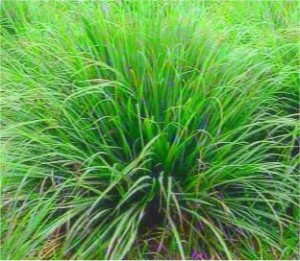
Lemongrass This plant has a fresh lemony fragrance that is appealing to most people, but that mosquitoes absolutely hate. It is the main source of many commercial repellents and repellent lanterns, torches or candles.
Lemongrass can be grown by seed but it’s a lengthy process. If the planting area is a garden or patio, grow this grass behind small shrubs & flowers. Otherwise plant along seating areas or walkways. Better is to grow them in pots which can be brought indoors as the plant is sensitive to cold temperatures.
The quickest way to grow lemongrass is by purchasing a mature bundle of it through any preferred produce spot, Asian store or grocery store.
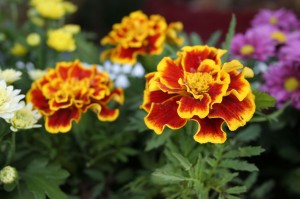
Marigold Commonly grown as ornamental border plants, marigolds are hardy annual plants which have a distinctive smell which mosquitoes, and some gardeners, find particularly offensive. Marigolds contain Pyrethrum, a compound used in many insect repellents.
Potted marigolds can be positioned near entrances to your home and any common mosquito entry points, such as open windows. The smell may deter mosquitoes from going past this barrier. While marigolds can be used as border plants around the patio, we do not advise putting marigolds on the patio table since the bright blooms may attract wasps.
Besides repelling mosquitoes, marigolds repel insects which prey on tomato plants, so you may want to plant a few marigolds in your tomato bed for added protection.
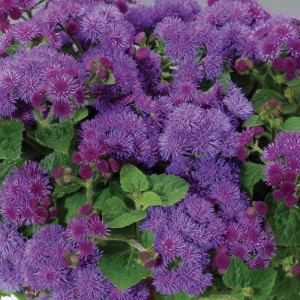
Ageratum Also known as Flossflowers, Ageratum emits a smell which mosquitos find particularly offensive. Ageratum secretes coumarin, which is widely used in commercial mosquito repellents.
Ageratum is a low-lying annual ornamental plant which reaches heights of 8 – 18”, and is easily recognized by its blue flowers, although there are varieties with pink, white and violet blooms.
This plant will thrive in full or partial sun and does not require rich soil. It is often displayed in rock gardens where low-lying plants are favored.
Although the leaves of Ageratum can be crushed to increase the emitted odor, it is not advisable to rub the crushed leaves directly on the skin.

Rosemary This herb is awesome for cooking, but did you know that it’s great for repelling mosquitoes, too?
Rosemary likes a Mediterranean climate, so it thrives in well draining soil and full sunlight. It’s easy to grow and doesn’t require much water. If you live in a warm climate, your rosemary will even survive the winter. If you live in a climate where the winter dips below 30 degrees F, plant your rosemary in pots so that you can bring it indoors during the winter.
Rosemary is technically a shrub and can get quite large, so trim it frequently.
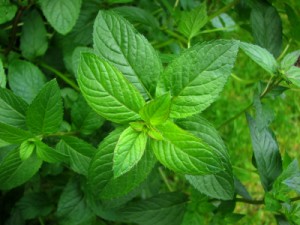
Mint Why it is mosquitoes don’t like the refreshing, delicious scent of mint? It gives off a strong incense-like odor which confuses mosquitoes by masking the smell of its usual hosts.
Mint is a very hardy plant that grows rapidly in the ground or in pots. You can pick mint leaves and rub them on your skin as a mosquito repellent, or just include the plants in your landscape.
Mint leaves can be dried and used to make herbal tea. Its flowers will also attract bees and butterflies to your garden.
As a bonus, mint is also great for cooking and makes refreshing summer cocktails.
As you can see, these are just a sample of a few different plants out there that can help to keep bugs away! For more information and a list of plants that repel pesky mosquitoes contact DK Landscaping (707) 280-3632. So the next time you reach for the chemical bug spray, take a minute and think again, and choose something more natural!
Backyard Beauty On A Budget
Want to build the garden of your dreams, but don’t want to shell out your hard-earned dough? Creating a low-maintenance yard on a budget has its challenges, but there are many ways to meet them. Good planning, a little gardening knowledge, creativity and a willingness to think outside the window-box are all you need to make your yard an enjoyable oasis for family and visitors alike without breaking the bank. DK Landscaping is here to you a less-expensive way to make your yard a better place!
DEFINE YOUR SPACES
Clearly defining the space you need whether it be, dining area, cooking area, shady lounging area, play area can make a great impact on your yard. Doing this can be as inexpensive as repositioning the furniture and accessories you already have. You may also want to build or buy a storage shed to keep kids’ toys out of sight when not in use.
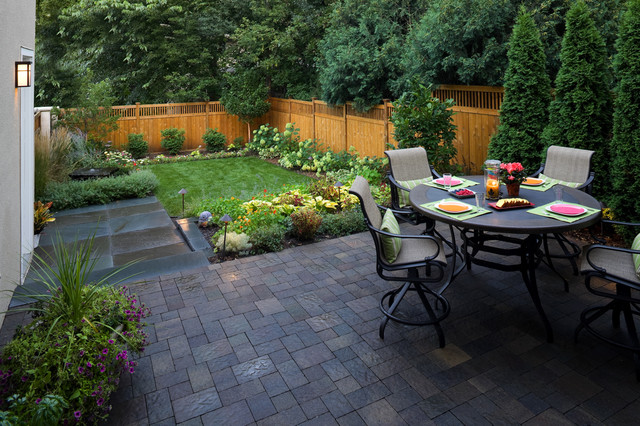
BUY TREES
If you have to spend money on the landscape spend it first on trees. you should always put trees in your landscape before anything else. It is worth a little extra money to get a good landscape tree. There are a lot of trash trees that will send up suckers, leave huge messes on your lawn, require hours of pruning, and die just as your landscape matures. For shade trees, named hybrid maples, oaks, and sycamores are almost always a safe bet. Avoid birches, most elms, poplars, and some ashes which grow fast, but are ultimately short-lived.
THINK VERTICALLY
If your backyard features a large, flat lawn, add some dimension by positioning boulders (available at landscaping supply stores) throughout the space. You might choose to arrange them individually or cluster a few together. Don’t be afraid to cut into the lawn to accommodate them and leave some space around for planting colorful perennials or small shrubs.
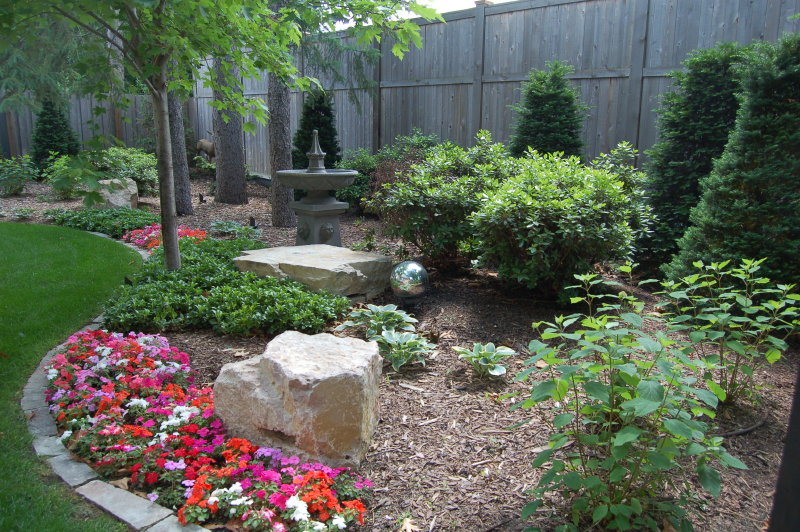
BUY PERENNIALS
As tempting as all those beautiful annuals are on the nursery shelves, think ahead. Every year you will need to replace them, as they die. This is one of the quickest ways to burn through a landscape budget. If you are willing to start annuals from seed (or any other plant for that matter) go for it! Just don’t buy them in a pot (or pony packs, or flats). Perennials on the other hand get bigger and more attractive year after year. A single $2, 4″ potted perennial can be a 8-foot mound of color within three years. The annual will be about the same size as the pot and will have cost three times as much.
TIP: Buy in the fall when perennials are on sale. Trees, shrubs and perennials are the bones of any garden. Unfortunately, they cost an arm and a leg at the beginning of spring and summer. Everyone thinks that you have to plant these at the beginning of the season. The reality is that they can also be planted in the fall when temperatures are cooler. The best part is that trees, shrubs and perennials go on sale at the end of the season, from anywhere between 5o to 75 percent off their regular price.
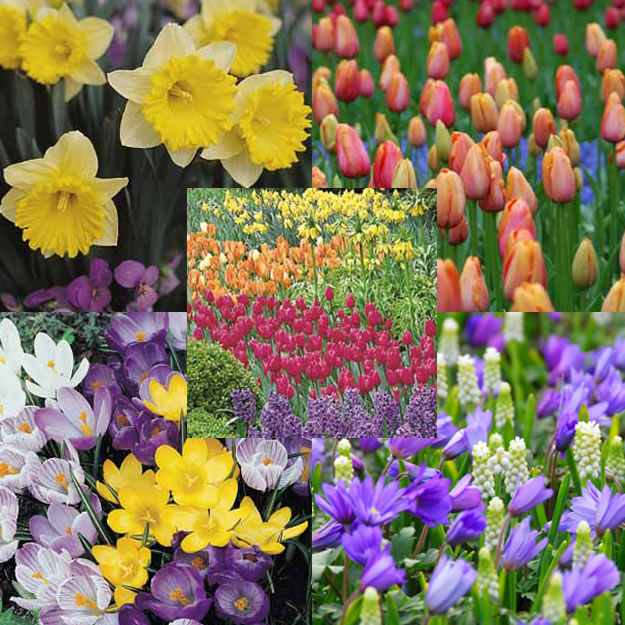
Freecycle and Craigslist
Check out Freecycle and Craigslist to find all manner of garden goodies. Everything from plant divisions to garden tools, pots, containers and even garden furniture often for deals during spring and summer.
You can easily start many plants from seed, get free divisions and cuttings from generous neighbors to help you save cash when planting your own garden. Hardscape goods are really expensive, but you can easily source them from other gardeners who are undergoing remodeling projects. Buying trees, shrubs and perennials at the right time of the year will earn you the biggest savings when landscaping your yard. Use these frugal gardening tips to help you easily landscape your yard into the verdant paradise of your dreams. If you’re interested in learning more about landscaping, consider contacting DK Landscaping for a free consultation (707) 280-3632. Serving the greater Sonoma County areas.
Stop and Smell The Flowers!!
Flowers! From incredible wedding bouquets and beautiful Mother’s Day arrangements to blooms we offer in the hope of soothing hurt feelings, there are many occasions and reasons for why we plant them and offer them as gifts. So As you begin to paint the picture of your landscape plan, take a moment to consider their meaning before you begin to plant. Here are a few of the most popular floral choices and the meaning that they convey:
Roses 
There is no flower that has been revered and celebrated as much as the rose. As a source of inspiration to people throughout history, roses are the definitive symbol for love and appreciation, but the different colors also have a meaning all of their own:
Yellow roses mean joy ~ Red roses mean passion ~ Burgundy roses mean unconscious beauty ~ Orange/coral roses mean desire ~ Red and white roses together mean unity ~ Pink roses mean grace and gentility ~ White roses mean worthiness
Orchids
With an exotic appearance, orchids have come to represent rare and delicate beauty. Those seeking to make a lasting impression with a unique flower have found the orchid to be a perfect choice. As both potted plants and cut flower arrangements, these tropical flowers have an undeniable appeal. Different cultures throughout history have believed in the healing, disease-fighting and protective properties of the orchid. In traditional Chinese medicine the orchid is used to help cure coughs and lung illnesses. The ancient Greeks associated it with virility, and the Aztecs were said to drink a mixture of the vanilla orchid and chocolate to give them power and strength.
Lily 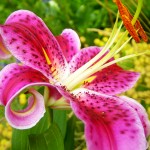
A very common flower at funerals, lilies also symbolize virtues such as purity, sweetness and friendship. The Greeks believed the lily sprouted from the milk of Hera, the wife of Zeus. White lilies signify purity and sweetness, day lilies symbolize coquetry and yellow lilies can mean falsehood or gaiety. Lilies of the Valley mean a return of happiness.
Iris Flowers
Few other flowers can match the elegant beauty of the iris. Representing faith, hope, and wisdom, the iris is a flower that can be used for many different occasions. While it is most known for its distinctive blue varieties, the iris can also be found in other colors such as yellow and white.
Tulips
With their flower meaning being perfect love, tulips can impart a sense of grace and elegance wherever they are displayed. The tulip is recognized throughout the world as one of the most popular cultivated flowers, but they are particularly associated with the Netherlands. Dutch tulips are among the leading tulip varieties within the floral community.
Carnation
As one of the most popular flowers in the world, the carnation is widely appreciated and enjoyed. Carnations are available in a variety of colors and are generally symbolic of love and fascination.
- Red carnation symbolizes love, pride and admiration
- Pink carnation symbolizes the love of a woman or a mother
- Purple carnation symbolizes capriciousness;
- Yellow carnation symbolizes disdain, rejection or disappointment
- White carnation symbolizes innocence and pure love
- Striped carnation conveys refusal
DK Landscaping are your landscaping and gardening experts. If you need a company to spruce up your existing landscape or custom design one, call us.. DK Landscaping serves Petaluma, Cotati, Rohnert Park, West County, Santa Rosa and Windsor areas. Call us today ![]() 707.280.3632.
707.280.3632.
DIY vs. Hiring a Professional Landscaper
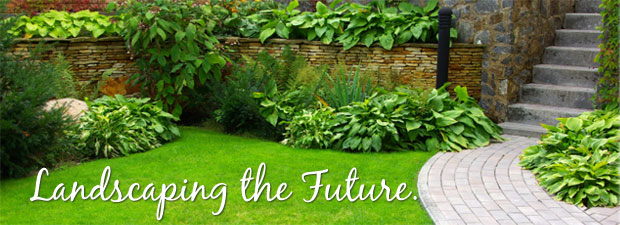
Every homeowner wants to have a beautiful, pristine and well-manicured landscape. Oftentimes, homeowners decide to design and maintain it themselves to save money. But the reality is, keeping your lawn well-maintained and healthy is a time-consuming job – fighting weeds, heat, debris and pests and trying to keep everything green and lovely. If you spend a lot of time at work, you may not want to commit your off days to yard work. So before deciding whether to continue do it yourself or hiring a professional landscape maintenance company, here are a few more things to consider may sway your decision:
Professional grade work – While DIY can be fun, unless you have some experience with these types of projects, this can end up consuming more of your time and can potentially end up to be disastrous. If you’re going for curb appeal or a professionally manicured lawn, a professional lawn maintenance company is the answer. With the right equipment and experience, professionals can get the job done quickly, efficiently, and beautifully while you focus on other things.
Knowledge –A skilled landscaper has knowledge that your average person doesn’t have concerning grasses, trees, shrubs, and plants. They know when to prune, what grows best where, and how to care for difficult plants. Having someone who knows the ins and outs of botany can be the difference in a mediocre backyard and one that all your neighbors are talking about.
Economical – Hiring a professional can sometimes be more economical. For a certain weekly fee, homeowners receive the benefit of professional knowledge and execution. Also, homeowners will not have the expense of purchasing the various tools and equipment necessary for lawn and garden maintenance, tools and equipment that include lawnmowers, weeders, edgers, fertilizer, grass seed, leaf blowers, and shovels.
Convenience – Lawn care will take you away from other activities like work, family time, entertaining friends and relaxation. Although you will pay for professional landscape maintenance, the convenience may justify the cost.
We at DK Landscaping also offer a spring-cleaning service that will help prepare your lawn and garden for the spring and summer months. It’s a time to prune the old and plant the new. We know exactly what needs to be taken care of this time of year and are ready to tackle even the most difficult home landscaping job.
Handing the reigns over to someone who landscapes for a living gives you freedom to enjoy your spring and summer without worrying about your projects going undone. Call Kathy or David Lee at DK Landscaping (707) 280-3632.







